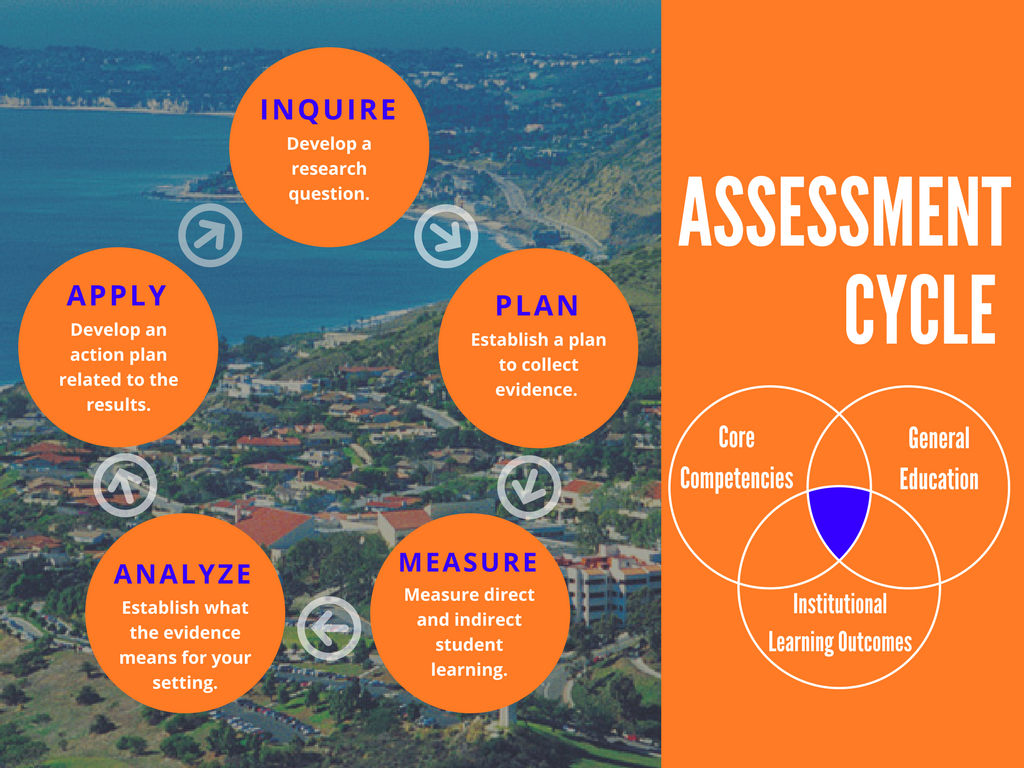Assessment Cycle
Assessment of student learning occurs when academic professionals (i.e., faculty or student life staff) examine student outcomes. This complex task begins with a question, which could be stated in the form of an outcome, and continues with a plan to collect evidence of learning that will be analyzed in order to answer the question (or to establish if the outcome was met). Evidence usually consist of samples of students' work (i.e., direct evidence), which is supported by additional information that will help inform the process, such as student surveys, focus groups or internship evaluations (indirect evidence). The actual approach to assessment is similar to social science research, such that it is systematic and requires organization and planning. The assessment cycle is composed of five steps: Inquire, Plan, Measure, Analyze, Apply.
More information regarding the assessment process specifically at Graziadio can be found here.
Inquire
Develop a research question, which could be in the form of a Learning Outcome (e.g., upon graduation, a student will be able to write a comprehensive review of the literature that supports their area inquiry). Therefore the question is phrased as: "Can a student write a literature review?"
Plan
Establish a plan to collect evidence. Choose an analytical approach and criteria for assessment:
- What data is needed to answer the question?
- How large does the sample size need to be?
- What tools will be needed to collect/assess evidence?
- How will the process be implemented?
- Who will analyze the data?
- Who will write the report?
Measure
Measure direct and indirect student learning. Data collection is actual fieldwork: measuring direct student learning along with indirect and authentic forms of learning. Direct forms of learning are often assessed from tests, exams, essays, assignments, and student products. Indirect forms of assessment consist of student surveys, focus groups, or interviews and help support findings from direct measures. Authentic assessment refers to students' performance in real life settings, such as internships.
Analyze
Establish what the evidence (student data) means for your setting. Report on the results in such a way that it answers the research question or establishes the student performance on the outcome. Questions to be answered through the analysis include, "what is an acceptable student performance?" The institution's mission, the student's major, year in school etc. all support the analysis.
Apply
Develop an action plan related to the results. How will the results be used? Is change needed or do the results support that students are meeting the expectations? What are the next steps? What is the specific plan of action?
*The content on this page was adopted from Pepperdine's Office of Institutional Effectiveness.
